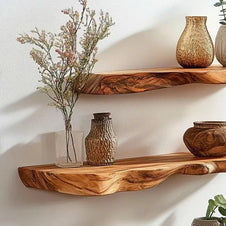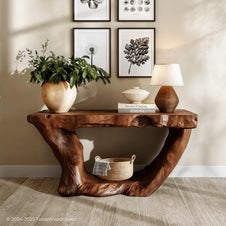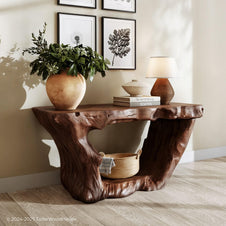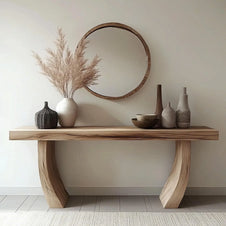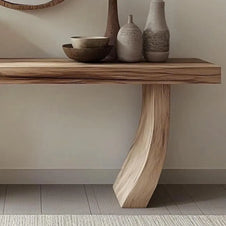Wondering where to put floating shelves in living room? The right placement can turn blank walls into eye-catching features while adding practical storage.
From above the couch to overlooked corners, this guide explores stylish, functional ways to place and decorate floating shelves.
Why Floating Shelves Are a Game-Changer for Living Rooms
Many living rooms struggle with blank walls and unused corners that make the space feel incomplete. Floating shelves solve this problem beautifully:
-
They create functional storage without taking up floor space.
-
They bring balance and proportion to the room.
-
They allow personal expression through books, plants, and art.
As highlighted by House Beautiful’s floating shelf ideas, shelves are one of the easiest ways to instantly refresh a living room.
Knowing where to put floating shelves in living room makes them even more impactful, ensuring they both serve a purpose and elevate design.
For homeowners looking to maximize style and efficiency, exploring where to put floating shelves in living room is the first step toward transforming unused walls into stunning features.
Best Spots for Floating Shelves in a Living Room
Choosing the right spot makes all the difference. Let’s explore where shelves can maximize both function and design.
1. Above the Couch for a Bold Statement
One of the most popular answers to where to put floating shelves in living room is above the sofa.
Shelves here frame the seating area and create a natural focal point. Use them to showcase framed art, plants, or books that tie in with the room’s palette.
For inspiration, Drew & Jonathan’s shelf styling guide suggests mixing personal items with decorative objects.
2. Around the TV for Balance
TV walls often feel stark. Adding floating shelves around the TV softens the look and gives balance. Mix functional storage, like DVDs or remotes, with stylish items like vases or candles.
3. In an Empty Corner to Fill Dead Space
Corners are often wasted space. By installing floating shelves, you can display trailing plants, sculptures, or books. This not only fills dead space but also adds a cozy, layered feel to the room.
How to Decorate Floating Shelves Like a Designer
Styling is just as important as placement. Even if you know where to put floating shelves in living room, the wrong styling can make the shelves look cluttered or unfinished.
Designers use a few timeless rules that can easily be adapted to any home style. The goal is to create shelves that look curated, intentional, and balanced while still reflecting your personality.
1. Rule of Thirds
Instead of lining up objects in a stiff row, group them in sets of three or five. Odd numbers are visually appealing and add natural flow to your shelves.
For example, three ceramic vases in varying sizes on one side of the shelf feel more engaging than two identical items.
When deciding where to put floating shelves in living room, this rule helps you arrange them with artistic flow.
2. Layer Heights
Mix tall, medium, and small items to create depth. A tall plant or candlestick at one end, a medium-sized framed photo in the middle, and a small accent like a candle or figurine at the other end provides balance and prevents monotony.

This striking tree-style shelf can be a beautiful focal point in a dining area, perfect for displaying a curated collection of cookbooks, decorative plates, or small plants.
3. Seasonal Swaps
Keep your shelves looking fresh by changing décor with the seasons. In spring, add greenery and light ceramics. In autumn, bring in warm-toned candles and rustic textures. During the holidays, a string of lights or small ornaments instantly transforms the look.
4. Mix Materials
Combining wood, glass, metal, and textiles adds texture and richness. Too much of one material can feel flat, but mixing creates harmony. For example, a wooden box next to a glass vase and a brass sculpture creates visual interest.
Another key is to avoid overcrowding. Leave negative space so that each piece has room to breathe.
By following these design guidelines, your where to put floating shelves in living room ideas will look polished and professional.
How to Style Open Shelves in a Living Room Area
Open shelving requires a balance between beauty and functionality. It’s not enough to know where to put floating shelves in living room, you also need to style them with intention.
Poorly styled shelves can feel chaotic, while well-arranged displays create warmth and cohesion.
The secret lies in using design rules as a foundation while layering in personal touches that make the space yours.
1. Keep It Balanced
Balance is everything when it comes to shelves. Leaving negative space is just as important as what you put on display.
Shelves packed edge-to-edge with objects feel overwhelming, heavy, and even stressful. Instead, alternate between clusters of items and open areas. This creates visual breathing room and helps anchor your where to put floating shelves in living room design choices.

You want the eye to move naturally along the shelf, resting comfortably on focal points instead of feeling bombarded with clutter.
2. Add Personal Touches
While balance gives structure, personality gives soul. Open shelves are perfect places for framed family photos, travel souvenirs, or heirlooms. These small but meaningful items make the living room feel lived-in rather than staged.
A vintage camera, a pottery piece from your last trip, or a framed drawing from your child brings a personal narrative into the décor.
For more visual guidance, check out this Quill Decor guide on what to hang above a sofa, which applies similar principles to shelving.
Adding these pieces not only reflects who you are but also grounds your choices when deciding where to put floating shelves in living room so they reflect your story.
3. Play with Color Palettes
Color is another powerful styling tool. Matching shelf décor with your sofa, rug, or wall colors creates harmony in the room.
For example, if you have a navy sofa, echo the shade with deep blue vases or artwork on the shelves. Similarly, if your rug has earthy tones, integrate terracotta pots or warm wood elements.
Most importantly, styling gives purpose to your decisions about where to put floating shelves in living room, ensuring they enhance the atmosphere while telling your unique story.
Creative Uses for Floating Shelves Beyond Decor
Floating shelves aren’t just for pretty displays; they can also play a highly functional role in your home. In fact, some of the most effective designs combine beauty with practicality.
Perfect for organizing everyday essentials like remotes, magazines, or even incoming mail. They keep clutter off the coffee table and make the room look tidier.
A set of sturdy shelves can transform an unused corner into a beverage nook, serving as a mini bar for entertaining guests or a cozy coffee station.
Shelves are excellent for highlighting passions: vinyl records, ceramic bowls, or framed photographs. They turn a blank wall into a curated story of your lifestyle.
Each arrangement shows that deciding where to put floating shelves in living room isn’t only about décor, it’s also about creating smart, multifunctional spaces that make life easier and more enjoyable.
Built-In Cabinets vs. Floating Shelves – Which Works Better?
Both built-in cabinets and floating shelves have unique benefits. Here’s a quick comparison:
|
Option
|
Pros
|
Cons
|
|
Built-In Cabinets
|
Large storage, custom, and polished look
|
Expensive, permanent, less flexible
|
|
Floating Shelves
|
Affordable, easy to install, renter-friendly
|
Limited storage, requires styling
|
If flexibility and affordability matter, floating shelves are the smarter choice. If you want a permanent architectural feature, built-ins win.

A single rustic floating shelf like this adds a natural touch to a kitchen, ideal for holding spices, an oil dispenser, or a few favorite mugs.
What to Put on Floating Shelves – Best Styling Elements
When thinking about where to put floating shelves in living room, styling them properly is just as important as placement.
At the same time, floating shelves are versatile enough to extend into other spaces, such as kitchens and dining areas, creating continuity in open-plan homes.
1. Best Styling Elements for Living Room Shelves
Here are tried-and-true items that always make shelves shine:
-
Books: Stack vertically and horizontally to create rhythm.
-
Potted Plants & Greenery: Add life, freshness, and color.
-
Candles & Ceramics: Provide warmth and handmade charm.
-
Sculptures & Decorative Bowls: Introduce artistic flair.
-
Seasonal Accents:
Pumpkins in fall or garlands in winter for a festive touch. For seasonal styling tips, Better Homes & Gardens shares how color choices influence mood and design.
Using these elements thoughtfully ensures your where to put floating shelves in living room look cohesive year-round.
2. Extending Shelf Ideas to Kitchen and Dining Areas
The beauty of floating shelves is their flexibility beyond the living room.
-
In the kitchen, they can store mugs, plates, or jars of spices while keeping counters clear.
-
In the dining area, shelves provide a stylish spot for wine bottles, glasses, or decorative trays. To keep everything connected, use consistent wood tones and finishes across rooms.

This clever corner shelf maximizes a small dining or kitchen nook, providing a perfect spot for decorative pottery or a set of teacups.
With smart styling choices, your approach to where to put floating shelves in living room naturally extends into other spaces, creating a unified and welcoming environment.
Conclusion
Choosing where to put floating shelves in living room is about more than filling space - it’s about enhancing both style and function.
Whether above the couch, around the TV, or in an unused corner, shelves bring balance and personality to your home.
With thoughtful styling and inspiration from design experts, floating shelves transform blank walls into curated focal points that feel intentional and uniquely yours.


